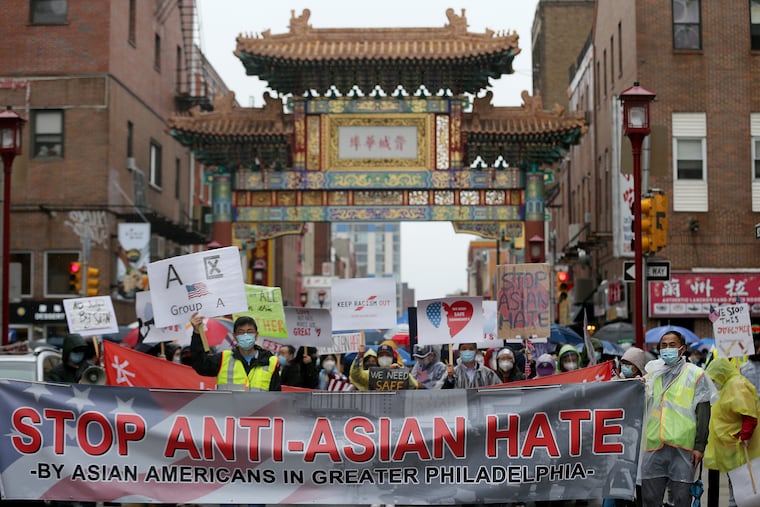Redefining the ‘other’ and what it means to be an Asian American | Expert Opinion
Just as Americans must stand together to fight AAPI hate, health-services researchers have a duty to see Asian patients as individuals and not just another non-white , non-Black group.

Amid the surge in violence against the Asian Americans and Pacific Islander (AAPI) communities, I have continued to reflect on moments of discrimination against myself as an Asian American. Shortly after moving to Philadelphia in 2017, I was verbally accosted by a group of elderly churchgoers in broad daylight with slurs of “Ching Chong Chang.” Years later, my mother moved to Philadelphia and recently admitted to me that she had been followed by an individual for several blocks in broad daylight yelling similar hateful words against her. I cried that night. Not because of the hate directed at us, but because a few short months ago, Philadelphia’s streets had been filled with thousands of people fighting against racism. When will Americans gather collectively in the streets to stand against AAPI hate?
As a researcher focused on addressing racial disparities in health care, the lack of support and the sense of invisibility are sadly all too familiar. Medicine has shifted toward a focus on personalized medicine, in which we, as clinicians, tailor our treatment plans for individuals accounting for their custom needs. Tools such as risk calculators are used to estimate potential risk based upon patient characteristics such as gender and race. The data used to formulate these calculators are based upon large studies that examine the association between patient characteristics and their associated disease-specific outcomes. While seemingly helpful for complex decisions, further investigation reveals that the study and application of race have been incredibly problematic throughout medicine’s history.
» READ MORE: Asian Americans must support each other after Atlanta attacks on our community | Opinion
Scientific studies rely heavily on the concept of statistical significance, which requires a large amount of data in order to reveal subtle associations between particular patient characteristics and specific outcomes. This is problematic for Asians. The most recent U.S. census data suggest that people who recognize themselves as AAPI are approximately 4% of the population. This small number makes it very difficult to make statistically meaningful conclusions on Asian patients in scientific research. Additionally, due to cultural and language barriers, Asians are typically the least willing minority group to participate in scientific studies, which further exacerbates the issue at hand. As a result, researchers oftentimes aggregate Asians and other unrelated minority groups into an “other” category in order to enlarge their sample size. Another common tactic is to simply drop these patient observations to reduce statistical noise in their analysis.
Consequently, when clinical guidelines or risk calculators are published, the categories for race are most typically limited to “Whites, Blacks, Other” or simply “Black and non-Black.” In either case, when clinicians use these tools, they find themselves basing decisions for AAPI patients upon data that do not accurately represent Asians. This issue is compounded by the fact that the term Asian is almost as meaningless as the term other in that it is defined by the U.S. Census Bureau as an aggregation of dozens of vastly different ethnicities. Published research has demonstrated that the aggregation of all these ethnicities under one umbrella of Asian only further exacerbates preexisting health disparities. Just as Americans must stand together to fight against AAPI hate, so must we as health-services researchers. Given the difficulty in disaggregating these data into smaller populations, we must begin to collaborate and share our data openly if we hope to successfully disaggregate data and better study individual ethnicities within the AAPI population.
» READ MORE: Philly Asian Americans have experienced a year of hateful acts, and fear reopening will make things even worse
The continued lack of recognition and fight against the pervasive and deep-rooted institution of discrimination against people of AAPI descent is an ongoing victory in the legacy of hate. As a researcher, a physician, an American, and an Asian, I believe that we must all come together to appreciate the differences and subtleties among every American. More important, despite our differences, we must actively work together to recognize our similarities, and to give name to the others of our communities. If we collectively fail to recognize the gravity of this pivotal moment in time and stand silent and invisible in the face of these injustices, then we will be complicit in enforcing the centuries-old notion that everything yellow is Asian, to be Asian is to be other, and to be Asian is to not be American.
Jason K.C. Tong is a general surgery resident at the Hospital of the University of Pennsylvania and VA National Clinician Scholar with a research focus on addressing racial disparities in surgical care.